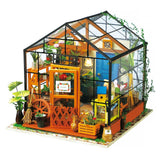Drones are taking on the Aerospace in the blink of an eye, Aviation Laws are having a tough time catching up. With hobby drones to the military, UAVs are all over the place with rules and regulations rapidly evolving to improve the safety, training and privacy of the citizens. In the US, one can fly certain types of drones in specified airspaces while in the UK, you may face serious lawsuits if you are anywhere close to the airports.
To establish a common base, the first draft for the global Drone standards have been released by ISO at the end of November. It is suggested that it covers existing laws and some general sense to fly your drones.
And here is what you need to know before the standards hit the air in the upcoming year.
#1 No-Fly Zones
To establish a common standard that agrees with all other nations, the strict no-fly zones will be proposed and accepted in all jurisdictions. Which means, for the US citizens, the latest Federal Aviation Laws permitting specific drones near airspaces to be outweighed.
#2 To Use Geofencing Technology

To avoid getting pursued by the law, one must use geofencing technology in order to avoid sensitive locations including airbases. There are some apps for camera drones which warns you such areas if your drone flies near it.
Check out our drone collection which can be controlled with a smartphone to keep you and your drone safe.
#3 Privacy standards to be implemented
In order to respect the other Humans in the locality of flights, one needs to get their consent before flying over their neighborhood. It is always better to shoot in less populated areas or common places.
#4 To get training lessons for Drone etiquette

Some new requirements to already existing Laws are the training and maintenance standards for drones. It requires the UAV operator to keep all the flight logs in detail and one must use only the latest version of hardware and software.
And some common etiquette lessons for Drone use.
#5 Emphasis on Human Intervention

One person should always be in charge of the drone to monitor flights as autonomous and auto-piloted flying machines are just machines by end of the day. This is to ensure the fail-safe method to fly UAVs and preserve the safety of the citizens.
#6 Speak the Same Language
Some use UAV (Unmanned Aerial vehicles) while another use UAS (Unmanned Aircraft Systems), the standards are suggested to maintain a consistent terminology worldwide for better understanding.
But these are just global standards and the first draft is open for public opinion until January 21st, 2019. Since it consists of Laws that are already in effect in many countries, the standards are meant to set a common tone to all UAV operators and manufactures.
Visit JustPeriDrive to get the coolest drones ever!
























